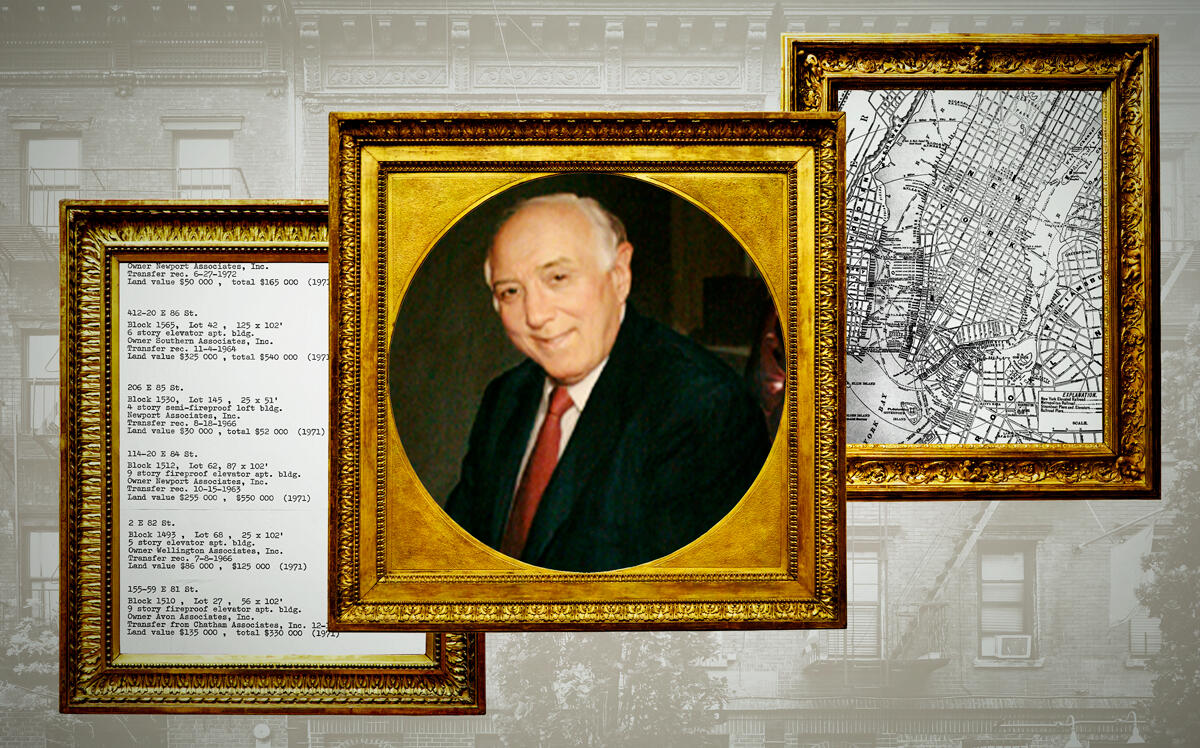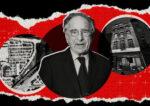Trending
Sol power: Megalandlord’s property empire subject of exhibit at the Tate
Artist maps out $6B portfolio, building by building

In the days before ACRIS and internet sleuths, Sol Goldman’s Manhattan property empire was cloaked in near-total secrecy, its only paper trail lying unassembled inside the dusty filing cabinets of the New York county clerk’s office. In 1972, at the height of Goldman’s dominance and notoriety, Hans Haacke decided to piece it all together.
Building by building, Haacke, a German-born artist, sketched a treasure map documenting the location, purchase price and ownership entities of the 350-odd buildings controlled by Goldman and his partner, Alex DiLorenzo. Along with each description, Haacke included photographs of the building’s facades. The final product translated Goldman’s muddled holdings into 11 clean columns of information, printed on plain paper. It was basic by today’s standards but unprecedented at the time.
That Rosetta Stone is now on display at the Tate Modern in London, titled “Sol Goldman and Alex DiLorenzo Manhattan Real Estate Holdings, a Real-Time Social System, as of May 1, 1971.” The piece opens with a list of the 19 shell companies Goldman used to purchase the properties, their delightfully boring names bulleted one by one: Oxford Associates, Pierpont Associates, Greenpoint Terminal Warehouse Incorporated.
The work, like Goldman’s real estate strategy – buy buildings, lease them out, barely ever sell – is simple. It calls to mind Haacke’s minimalist contemporaries like Donald Judd, who built their featureless sculptures to be mirrors of their viewers’ minds. With no obvious meaning, their art reflected whatever the viewer saw in it.
“In this business, you make money slowly.”
Haacke’s work also includes a map of Manhattan, with each of Goldman’s properties circled. They dot the grid like chickenpox, afflicting every extremity of Manhattan from the Upper East Side to the Financial District.
Goldman favored long-term ground leases, which promised steady returns over time. Tenants paid him rent for the land, but covered property taxes and building maintenance themselves. In 2013, The Real Deal pegged the value of the family’s holdings at $6 billion, including the land under trophies such as 1407 Broadway, Olympic Tower and the Cartier Building.
“In this business, you make money slowly,” Goldman told Forbes in 1985, two years before his death. “The main point is not to sell anything.”
Goldman’s portfolio passed to his children, Jane and Allan Goldman of Solil Management. Goldman’s nephew, Lloyd Goldman, founded BLDG Management, a major landlord in its own right with over 300 properties, according to its website.
Throughout his stewardship, tenant groups criticized Goldman, alleging that his company harassed tenants and neglected buildings.
“I wanted to do something about power in New York.”
In 1960, just 18 days after Goldman took control of the Chrysler Building, its service and maintenance staff went on strike. Goldman called in a labor relations firm, S.G.S. Associates, to handle the situation. The company’s treasurer and partner, according to a gold-plated placard on its office door, was one Carlo Gambino, head of the Gambino crime family.
Union representatives said soon after the strike began, goons arrived on the scene in Cadillacs, guns on their hips, according to the New York Times. The strike ended just hours later, after the mayor’s office intervened. Goldman was so satisfied with the group’s methods that he paid them a $13,500 annual retainer through 1963.

A news clipping of the incident at the Chrysler Building (Credit: The New York Times)
Goldman’s shell companies and ground-lessees inserted layers between the landlord and the alleged suffering at his properties. In so clearly cataloging the property records, Haacke breaks that distance, as if roundhousing a Jenga tower so only the top layer — Goldman — and bottom — his tenants — remained.
For his first solo exhibition in the U.S., Haacke planned to exhibit the piece and a similar one tracking landlord Harry Shapolsky’s real estate holdings at the Guggenheim Museum. The Guggenheim’s director, Thomas Messer, canceled the show and fired a curator who defended the piece. The museum, Messer said, was ”not the proper place in which to expose slumlords.”
To Haacke, the piece was about more than just lighting up a landlord.
“I wanted to do something about power in New York,” he told the Times in 1987. “And that is real estate.”




